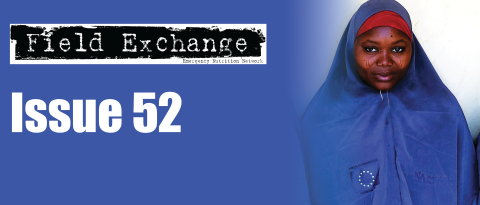The 2001-03 famine and the dynamics of HIV in Malawi: a natural experiment
Summary of research1
Location: Malawi
What we know: Poverty and inequality are well recognised structural determinants of HIV epidemics that are typically considered slow to change. Studies examining HIV prevalence decline typically investigate sexual behaviour change.
What this article adds: A recent study examined the effect of hunger on the dynamics of HIV in urban and rural sites in conditions created by the Malawi famine of 2001-03. The relationship between HIV prevalence (antenatal surveillance data) and rural hunger (households needing food aid); rural hunger and antenatal population changes and migration patterns were investigated. At rural sites an increase in 20.2% HIV prevalence was positively and non-linearly related to the extent of rural hunger (P = 0.016). In urban and semi-urban settings, prevalence declined as rural hunger increased (P = 0.006), reflecting rural (low risk) to urban (higher risk) migration. The Malawi famine appears to have had a rapid and substantial effect on HIV dynamics and demography. Rural-to-urban migration of women quickly impacted on prevalence. Actions that undermine food security can change prevalence and distribution of HIV infections. Epidemic patterns risk being misread if these kinds of social and economic change are ignored.
Introduction
A recent study makes use of the near-experimental conditions, created by the Malawi famine of 2001-03, as a country-scale natural experiment on the effect of hunger on the dynamics of HIV. The author hypothesises that the famine will have increased three of the fundamental determinants of HIV prevalence: incidence (from transactional sex and more early marriage); emigration and immigration in rural villages; and immigration and possibly subsequent incidence in towns and cities, for those in search of food or work. Hunger can also lead to depressed immune function, increasing the risk of infection once exposed.
Method
Multilevel, random intercept models were used to relate the change in HIV prevalence at antenatal surveillance sites (two rural, 20 non-rural) over the course of the famine to the proportion of rural households requiring food aid in the surrounding district at the famine’s peak. Similar models were used to relate this indicator of rural hunger to changes in the composition of the antenatal population. The extent and direction of migration were estimated from a household survey conducted one to two years after the famine.
Findings
At rural sites, the change in HIV prevalence (increase of 20.2% over the course of the famine) was positively and non-linearly related to the extent of rural hunger (P = 0.016), consistent with contemporary accounts of increased transactional sex and with hunger compromising immune function.
At non-rural sites (urban and semi-urban), prevalence declined as rural hunger increased (P = 0.006), concentrated in women who self-identified as farmers (P = 0.010). This finding is consistent with contemporary accounts of migration in search of food and work from villages, where HIV risk was lower, to towns and cities, where it was higher.
Corroborating this interpretation, the proportion of farmers in the antenatal population was found to rise at non-rural sites as rural hunger increased in the surrounding district (P = 0.015), whereas the proportion fell with increasing rural hunger at rural sites (P<0.001). The author interprets this as hunger pushing farmers into the towns and cities (and to other less-affected rural sites) as it removed farmers from the villages. The evidence presented in the paper suggest migrants were predominantly farming women under 25 years of age (P = 0.010). The 2004-05 integrated household survey confirmed that there was a surge in rural-to-urban migration during the famine, particularly by women under 25 years.
Conclusion
The Malawi famine appears to have had a rapid and substantial effect on HIV dynamics and demography. This study has relevance to situations beyond Malawi, as poverty and inequality, commonly considered structural determinants of HIV epidemics, can change rapidly, apparently transmitting their effects on the dynamics of HIV with little lag. This is important information for public health professionals, who generally consider such structural determinants of HIV to be slow to change. Epidemic patterns risk being misread if these kinds of social and economic change are ignored, with critical implications for policy. The author questions whether rural out-migration (which may be accelerated by hunger) has contributed materially to HIV declines elsewhere, as plausible conditions are frequently met in sub-Saharan Africa; HIV prevalence is generally lower in rural areas and the population is generally greater in rural than urban populations. Many studies examining HIV prevalence declines have implicated sexual behaviour change, but do not appear to have adequately considered the contribution of rural-urban migration. The evidence from Malawi, which links actions that undermined people’s food security to changes in the prevalence and distribution of HIV infections, suggests new opportunities for prevention.
Research
1 Loevinsohn, M. (2015) The 2001-03 famine and the dynamics of HIV in Malawi: A natural experiment. PLOS one. DOI:10.1371/journal.pone.0135108. September 2015


